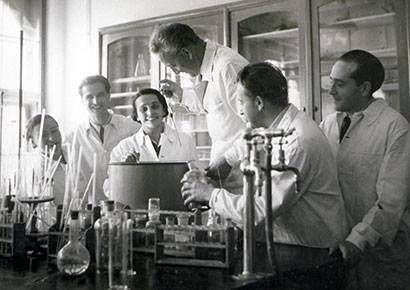The former home of Hungarian Nobel laureate Albert Szent-Györgyi, nestled in Újszeged, is now for sale. This storied villa, where the famed scientist lived during World War II, boasts four rooms, two kitchens, and rich historical intrigue. Situated near the Tisza River, this unique property captures the legacy of a Nobel Prize winner and his vibrant life, making it a gem for history enthusiasts and real estate seekers alike.
Hungarian Nobel laureate’s villa on the market
As Index writes, the former villa of Hungarian Nobel laureate Albert Szent-Györgyi, located in Újszeged, is on the market for HUF 195 million (EUR 474,204), nearly double the local average property price. This historic home, where Szent-Györgyi lived between 1940 and 1945, sits on Szent-Györgyi Albert Street near the Tisza River and Liget Park. The 117-square-metre brick house, set on a 1,016-square-metre plot, includes four rooms, two bathrooms, two kitchens, and a 34.4-square-metre outbuilding. The sentimental value of the property, marked by a commemorative plaque and its association with the renowned scientist, enhances its appeal, though neither the Szeged municipality nor the University of Szeged have expressed interest in acquiring it.
Here are some photos of the villa:




An “extra Nobel Prize”
Szeged is rich with legends about the vibrant life and adventures of Hungarian Nobel laureate Albert Szent-Györgyi. In 1939, two years after receiving the Nobel Prize, he hosted a distinguished gathering featuring actress Ella Gombaszögi, who noted his resemblance to 1930s German actor Hans Albers—a compliment he humorously dubbed his “extra Nobel Prize.” Szent-Györgyi met his first wife, Kornélia Demény, in 1916, marrying the intelligent and accomplished woman the following year. Together, they built a successful life until their divorce 24 years later.

Photo: Wikimedia Commons / Globetrotter19
An extraordinary life
In May 1944, the daughter of Hungarian Nobel laureate Albert Szent-Györgyi, Nelly, married György Libik, with their honeymoon spent at Szent-Györgyi’s villa in Újszeged. Despite the turbulent times of World War II, the newlyweds enjoyed a brief period of peace before returning to Budapest. Following the German invasion, György Libik undertook the critical task of protecting his father-in-law, who was forced into hiding. Initially seeking refuge with his second wife on her family estate near Szeged, Szent-Györgyi narrowly escaped arrest by the Gestapo, thanks to Libik’s timely intervention.
Later, Hungarian Nobel laureate Szent-Györgyi was hidden in Budapest with the assistance of Swedish attaché Per Anger, who facilitated his transfer to a safe house at Csekonics Castle. Disguised as an archivist, the Nobel laureate evaded capture, maintaining his safety through ingenuity and resourcefulness. In early 1945, his family reunited with him at Marshal Malinovsky’s headquarters in Szeged. Shortly thereafter, Szent-Györgyi, his daughter, and his son-in-law attended a performance at the Szeged National Theatre, a poignant moment that symbolised survival amidst a chaotic and dangerous era.

Read also: